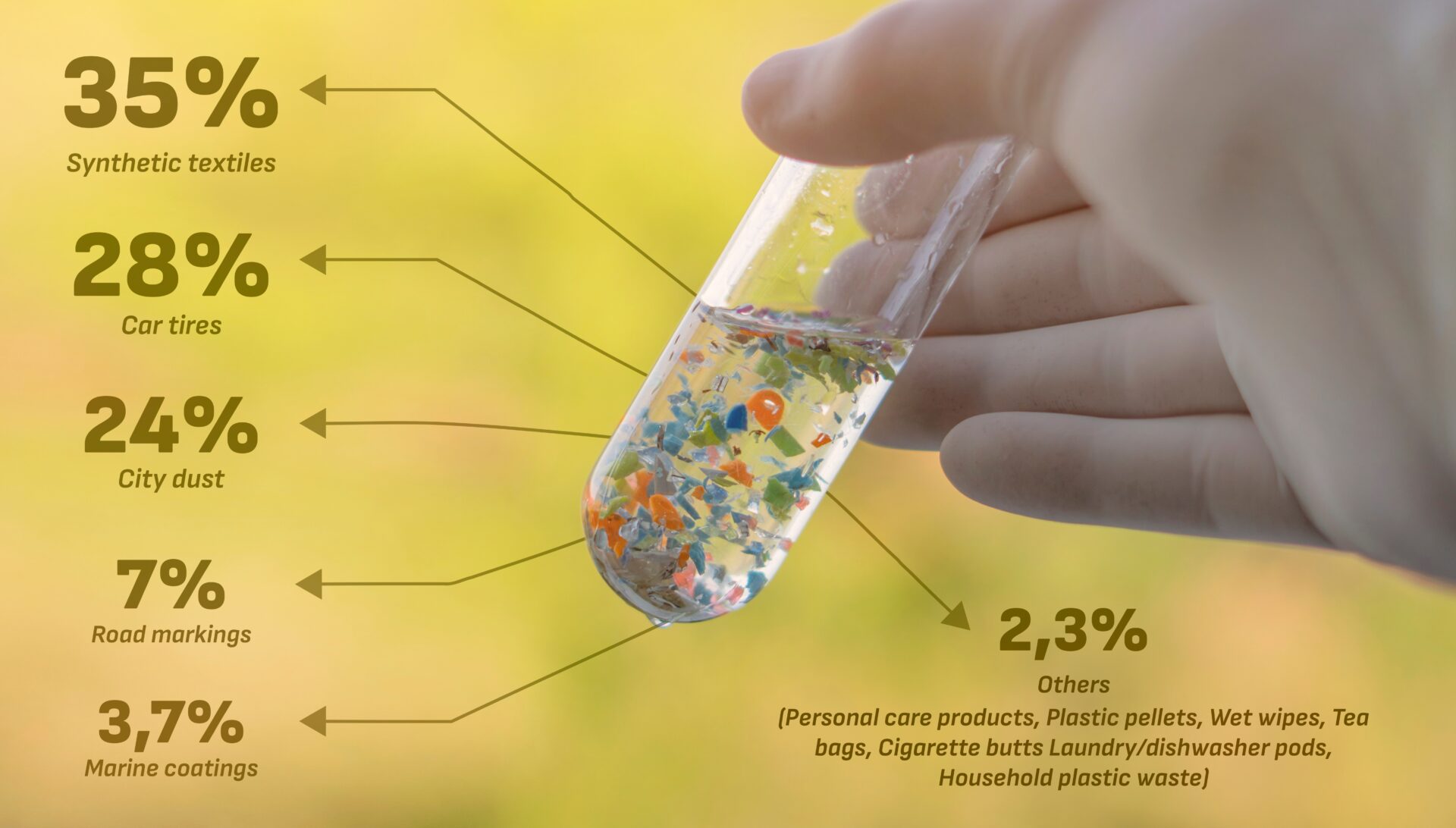News

The problem with microfibres
Microfibres are microplastics measuring 5mm or less that are shed from clothing during wear and washing. Known as ‘secondary’ microplastics they are the result of primary plastic fibres breaking down. Synthetic fibres are made from chemicals to form plastic-like materials frequently used in everyday clothing, sports apparel, and period pants.
The extent to which garments shed microfibres relies on the substances used to create garment fibres and the stitching yarn, many of which are based on different types of plastic. Garment colour and finish, the age of the garment, and how it is washed also make a difference to the amount of microfibres released. This is especially true for ‘fast fashion’ where fewer wash and wear tests are carried out.
It’s estimated that 12.2m tonnes of plastic waste enter global oceans, of which .95m tonnes are microplastics; textiles are the primary source of this. A single wash can release as many as 700,000 microfibres into wastewater. In the UK we average 69m loads of laundry a week so it’s perhaps unsurprising that laundering clothes accounts for up to 35% of all secondary microplastics found in the environment.
What are the health effects of microfibres and microplastics?
Microplastics have been detected in human blood and can be inhaled into the lungs where they can cause damage. Microplastics have been linked with toxic effects in the body including changes in reproduction and metabolism. The effects on human health are still being investigated, but evidence is growing that these tiny particles can lead to inflammation of body tissue, disturbances in the gut microbiome, and links with obesity and diabetes.
Researchers at the University of New Mexico have detected concentrations of microplastics in both human and canine testicular tissue, highlighting concerns about potential effects on reproductive health.
The problem with microfibres goes beyond the plastic particles of the fabric itself, but there are also concerns about the health effects of chemicals used during the manufacturing process. For example, chemicals used to create synthetic dyes, and fabric properties such as sweat and water resistance can have adverse effects on health. Microplastics can also pick up other particles along the way and have been found to attach to viruses and bacteria.
Can washing machine filters solve the problem?
The good news is that it’s relatively easy to filter out microfibres from washing machine wastewater, but few manufacturers fit them as standard yet. There’s also the problem of what to do with the filtered out microfibres – there’s no real solution yet other than to dispose of them where they are likely to end up in landfill. Recycling schemes are yet to be developed on a domestic scale.
If you would like to reduce the amount of microfibres released from your clothing and household textiles during your washing cycle, there are some solutions that are easy to follow:
- Choose more natural fibres for your clothing, bedding, and towels etc. Cotton, silk, bamboo, hemp, and still release microfibres, but not microplastics, especially if they’ve been produced organically.
- Fill your washing machine up – full loads cause less friction so fewer microfibres are released.
- Wash at low temperatures and shorter cycles. Research carried out by Northumbria University found a 30% reduction in the amount of microfibres released in a 30-minute 15˚C wash cycle, compared to an 85-minute 40˚C cycle.
- Try using a microfibre catcher in your washing machine. Research at the University of Plymouth found that the most effective of the catcher devices tested reduced the quantity of microfibres being released by 78%.
- Consider installing a retrofit filtration system on your washing machine. PlanetCare claim that their filters (attached to the washing machine wastewater pipe) can prevent the equivalent of 52 plastics bags making their way into our oceans every year. Gulp are developing “plastic free washing” with there soon to launch filtration system and working with leading manufacturers to adapt their designs.
- Choose high quality clothes with more densely woven fibre structures where possible; there is some evidence that fewer microfibres released.
The WI impact on raising awareness
A report published by an All-Party Parliamentary Group (APPG) on Microplastics was published in 2021 following a report published by the WI in 2018, titled ‘In a Spin’ which called on the government and industry to build a better understanding of the scale of the problem of microfibre waste entering the water course, and a call for actions to limit and reduce the quantity of microplastics shed from clothing in the future.
APPG’s are informal, cross-party groups. All were suspended when parliament was dissolved in May 2024.
More reading
The Microfibre Consortium roadmap
The information on our website should not be used as an alternative to medical advice from your doctor or other professional healthcare provider. If you have any specific questions about any medical matter, you should consult your doctor or other professional healthcare provider. Lastinghealth.com is not responsible for the content of external websites. The inclusion of a link to a third-party website should not be understood as an endorsement.






